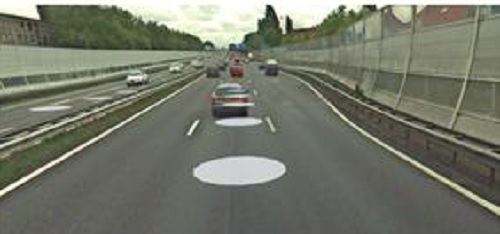Current issue
Online first
Archive
About the Journal
Aims and scope
Publisher and Editorial
Advertising policy
For Authors
Paper review procedures
Procedures protecting authentic authorship of papers
Paper preparation manual
Plagiarism check
Publication ethics
Reviewers
APC
Editorial and Scientific Board
Contact
Reviewers
Driving protocols: the possibility of using routing protocols in autonomous transport
1
Mechanical Department, Wroclaw University of Science and Technology, Poland
2
Transport Engineering and Technologies, Technical University of Varna, Bulgaria
Submission date: 2023-05-11
Final revision date: 2023-07-28
Acceptance date: 2023-08-03
Online publication date: 2023-11-06
Publication date: 2024-01-02
Corresponding author
Radosław Stanisław Wróbel
Mechanical Department, Wroclaw University of Science and Technology, Wroclaw, Poland
Mechanical Department, Wroclaw University of Science and Technology, Wroclaw, Poland
Combustion Engines 2024,196(1), 3-9
KEYWORDS
TOPICS
ABSTRACT
Removing the human factor from transport (in the direct sense) is still a plan, reaching into the future. However, this plan does not require so much imagination - autonomous vehicles can already be found on the roads. Currently, they are not only autonomous, but also independent, i.e. decisions about traffic parameters are made in the vehicle. In the future, with more autonomous vehicles, there will be a need to connect them with a communication network, which will eliminate a number of telematic problems. It remains an open question how to make this network? Is it based on the modern Internet network? What and which data will be necessary to achieve the “right relations” between autonomous vehicles (hosts of network)? The article presents one aspect of the mentioned problem; the amount of data generated by an autonomous vehicle is presented in the light of the processing capabilities of modern ICT systems.
REFERENCES (25)
1.
Andrych-Zalewska M. Research of pollutant emissions from automotive internal combustion engines in conditions corresponding to the actual use of vehicles. Combustion Engines. 2023;193(2):64-70. https:// doi.org/10.19206/CE-162621.
2.
Andrych-Zalewska M, Chłopek J, Merkisz J, Pielecha J. Investigations of exhaust emissions from a combustion engine under simulated actual operating conditions in real driving emissions test. Energies. 2021;14:1-20. https://doi.org/10.3390/en1404....
4.
Caillet P, Dupuis Y. Efficient LiDAR data compression for embedded V2I or V2V data handling. Arvics 2019.
5.
Choromański W, Grabarek I, Kozłowski M, Czerepicki A, Marczuk K. Pojazdy autonomiczne i systemy transportu autonomicznego. PWN, Warsaw 2020.
6.
Dimitrakopoulos G, Tsakanikas A, Panagiotopoulos E. Autonomous Vehicles Technologies, Regulations, and Societal Impacts. Elsevier 2021. https://doi.org/10.1016/C2020-....
7.
Gościewski D. Application of RLE recompression to reduce the size of grid files (in Polish). Technical Journal of the Cracow University of Technology. 2008.
8.
Igliński H. Pros and cons of autonomization of trucks (in Polish). Transport and forwarding (June–July); 2018.
16.
Isenburg M. LASzip: lossless compression of LiDAR data. Photogrammetric engineering and remote sensing. February 2013.
18.
Lyamin N, Dengy Q, Vinel A. Study of the platooning fuel efficiency under ETSI ITS-G5 communications. IEEE 2016:551-556. https://doi.org/10.1109/ITSC.2....
19.
Markowski A. Psychological basis of road accidents (in Polish). Time for transportation. 2017;9.
23.
Szałek A, Pielecha I, Cieślik W. Fuel cell electric vehicle (FCEV) energy flow analysis in real driving conditions (RDC). Energies. 2021;14:4. https://doi.org/10.3390/en1416....
CITATIONS (2):
1.
Numerically effective 10 degrees of freedom model in autonomous vehicle motion planning
Michał Brzozowski, Kacper Cieślar, Jacek Nowakowski
Combustion Engines
Michał Brzozowski, Kacper Cieślar, Jacek Nowakowski
Combustion Engines
2.
Comparison of pollutant emissions per passenger for public and individual transport
Łukasz Rymaniak, Jacek Pielecha, Maciej Ziółkowski, Jakub Sobczak, Natalia Szymlet
Combustion Engines
Łukasz Rymaniak, Jacek Pielecha, Maciej Ziółkowski, Jakub Sobczak, Natalia Szymlet
Combustion Engines
Share
RELATED ARTICLE
We process personal data collected when visiting the website. The function of obtaining information about users and their behavior is carried out by voluntarily entered information in forms and saving cookies in end devices. Data, including cookies, are used to provide services, improve the user experience and to analyze the traffic in accordance with the Privacy policy. Data are also collected and processed by Google Analytics tool (more).
You can change cookies settings in your browser. Restricted use of cookies in the browser configuration may affect some functionalities of the website.
You can change cookies settings in your browser. Restricted use of cookies in the browser configuration may affect some functionalities of the website.



